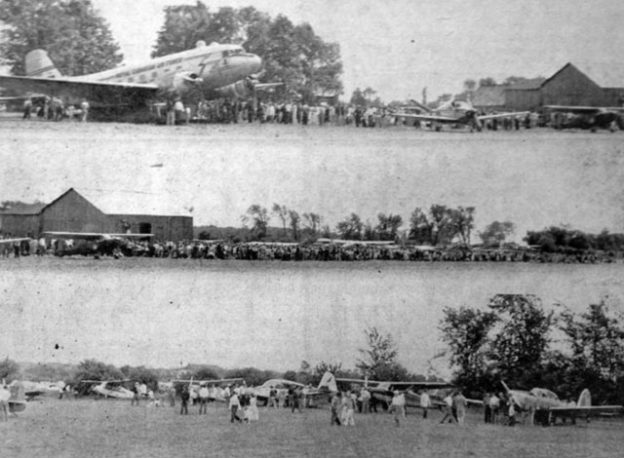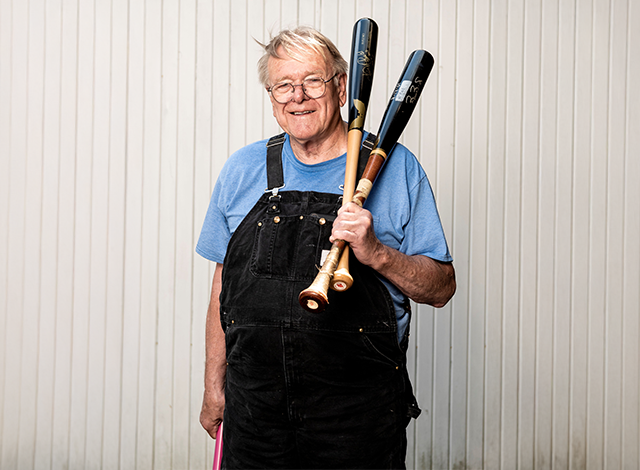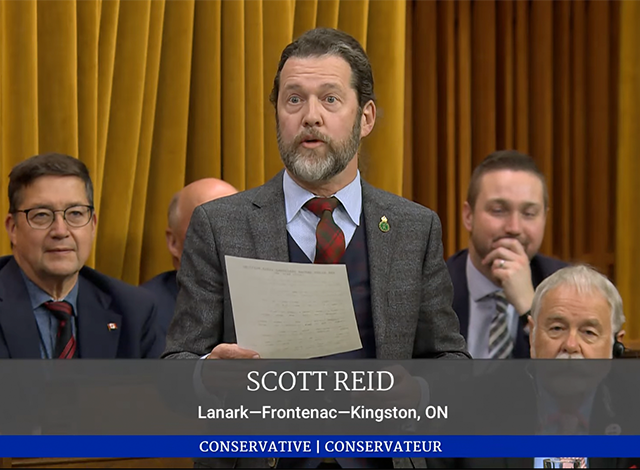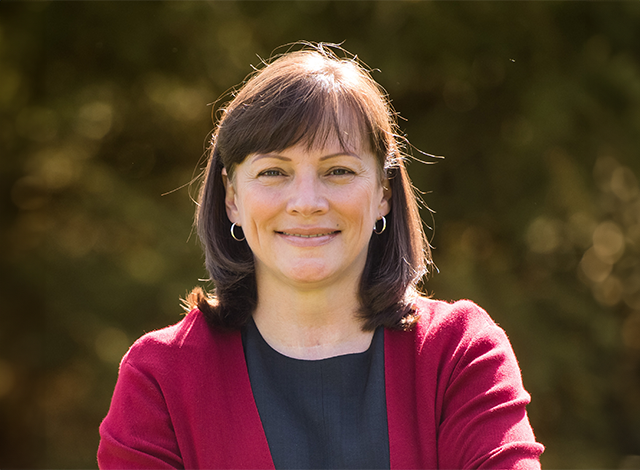When the president of Eastern Ontario Development Association, J.A. (Joe) Perkins, addressed a large crowd at the grand opening of Perth Municipal Airport on August 30, 1956, he could not have realized his remark that “such an airport would be as necessary as a railroad” would prove to be so prophetic, although not in the way he intended. Perkins felt at the time that the airport would help draw new industries to Lanark County.
A front-page news report from Aug. 30, 1956 carried the headline: “Opening Ceremony at Perth’s Airport Draws Record Crowd …” Many speakers took to the podium in front of 3,500 spectators, all optimistic about the future of aviation in Perth, and even suggesting a customs office would be established “for the convenience of American visitors.” Four T-33 jet trainers made low-level sweeps across the new airstrip to open the show, and cap off the day, three CF-100s from Ottawa made a fly-past in salute.
No aviation news of consequence was reported until a Perth Courier July 9, 1959, headline: “On Saturday two airmen were killed when their plane crashed at the Municipal Airport …” The plane went into an uncontrolled tailspin before a crowd of 1,500 at the third annual air show, and the pilot and observer plummeted to their deaths.
The tragic accident of 1959 appeared to have dulled the enthusiasm in Perth for flying, and it was not until May 5, 1963, that the first commercial plane officially landed in Perth. “It brought a former Perth couple from Saranac Lake, NY to Perth for visiting and fishing. Then on Tuesday a pilot from Saranac Lake flew to Perth to ferry the couple back home, arriving in a twin engine Piper Apache. The pilot went through customs and departed soon after.”
The airport was being run by the first version of the Perth Flying Club, and the members had joint ownership of a plane. However, it appears that the flying club ceased to exist after a member demolished the plane while landing in a cross-wind. Although the airport was still officially in business, the facility was not being maintained properly.
It was reported in the fall of 1964 that the airport’s licence had been denied by the Department of Transport for failing to meet safety standards. The licence could not be renewed “until flight safety regulations have been approved.” The licence was renewed, but soon the club ceased to exist, and the strip began to deteriorate again. Another flying club was proposed a few years later in 1970.
The handwriting was on the wall by the fall of 1976, when the town planning board began discussing an amendment to the official plan in relation to land used by the airport. A flying club was not in existence at the time, and the town was in control of the airport. In August the airport had been visited by Transport Canada, and a report was submitted to the town noting a long list of problems.
On August 29, 1979, a meeting of area flying enthusiasts was called in an effort to get a club off the ground again. A club was formed, but the town was already considering a new industrial park at the airport location. Almost a year later, it became known that town council had turned down an option to purchase some 200 acres of land for an airport, so local flyers would have to make do with the current airfield. It was felt by council that such a purchase would bankrupt the town.
Early in the year of 1982, serious talks began taking place again about the land use at the airport. A planning board meeting took place on March 17 of that year to discuss the possible move of Albany International from Cowansville, Quebec, while the Perth Flying Club still maintained the position that the town should consider a new airport in another location if the move went ahead. The Perth Flying Club then filed a formal objection to the rezoning plan.
Late in April, an agreement was reached where the town would pay the flying club a relocation fee of $4,000 and the club would withdraw its objection to OMB, allowing the sale of the land to go ahead in June. The airport would no longer exist. But by 1984, town council was again discussing a site for a possible airport. It was decided that “the airport committee would look at sites to determine if the town can afford an airport.”
Sadly, the commercial aviation industry in Canada would take a sudden turn for the worse that affected small operations, when the country underwent a deregulation program similar to what had already happened in the United States. The regional airline industry would disappear.
Even though the airport dream never really took off, local pilots would find a way to continue flying for a few years, and we will discuss that in next month’s column.
If you have any comments or suggestions, please email me at: terry@pdgmedia.ca
























Dear Mr. O’Hearn,
Thanks very much for this article. Fascinating piece, and nicely illustrated and very well written.